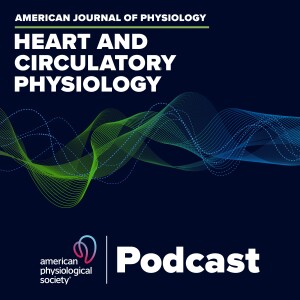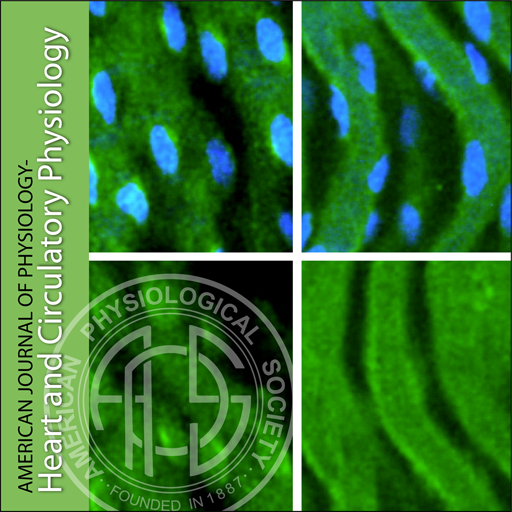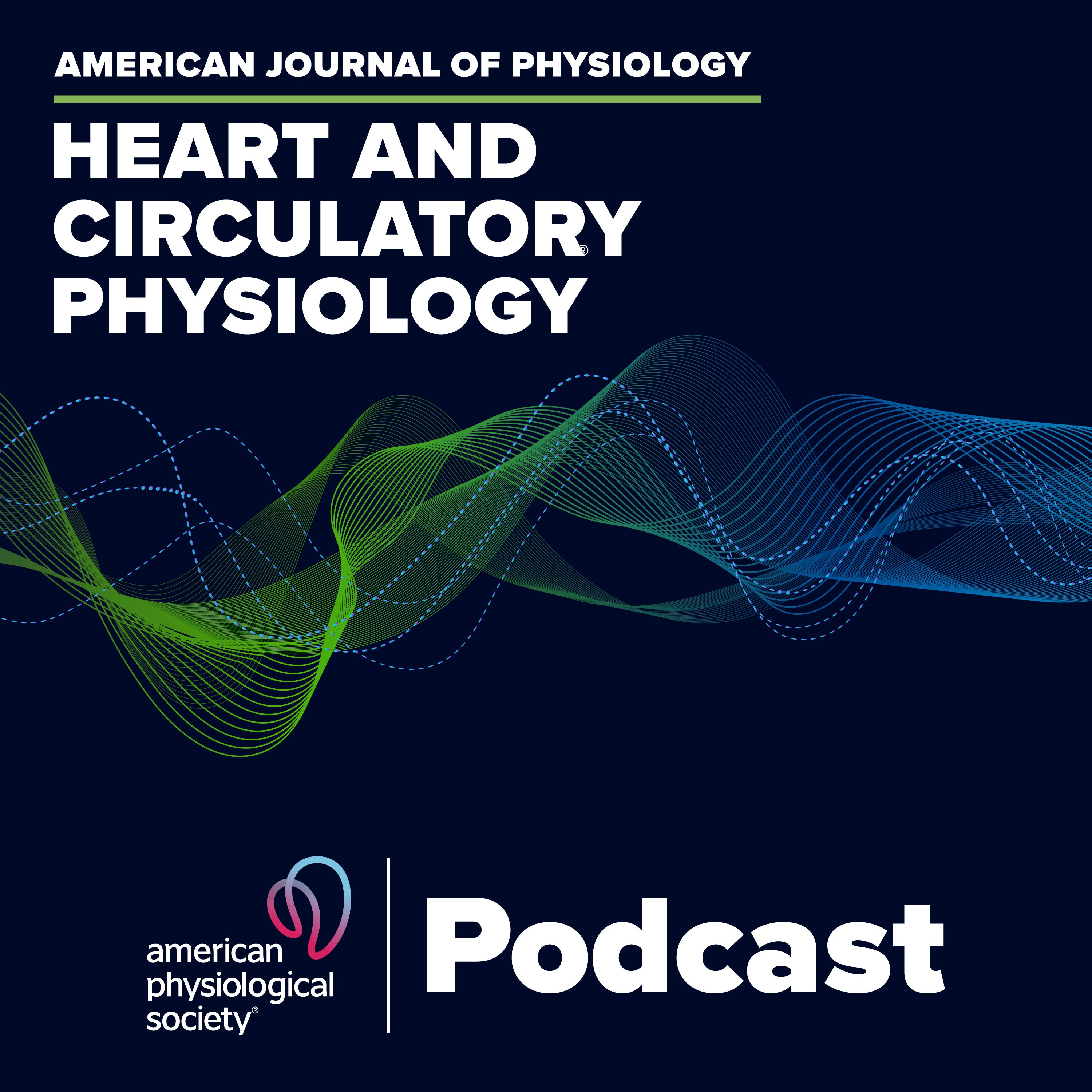Episodes

Tuesday Aug 19, 2014
TIMP-4 and Left Ventricular Pressure Overload
Tuesday Aug 19, 2014
Tuesday Aug 19, 2014
How does TIMP-4 really behave in the myocardium, and what is its role in the pressure overload response to transverse aortic constriction? In this engaging author interview, Deputy Editor Merry Lindsey talks with lead author Francis Spinale (University of South Carolina School of Medicine and WJB Dorn VA Medical Center) and expert Zamaneh Kassiri (University of Alberta) about the work by Yarbrough et al, which surprisingly showed that inducing TIMP-4 in the setting of pressure overload may be beneficial. Have Spinale and colleagues opened the door to a sea-change in the current canonical thinking of TIMP roles? Listen and find out.
William M. Yarbrough, Catalin F. Baicu, Rupak Mukherjee, An O. Van Laer, William T. Rivers, Richard A. McKinney, Corey B. Prescott, Robert E. Stroud, Parker D. Freels, Kia N. Zellars, Michael R. Zile, Francis G. Spinale Cardiac Restricted Overexpression Or Deletion Of Tissue Inhibitor Of Matrix Metalloproteinase-4 Am J Physiol Heart Circ Physiol, published online July 3, 2014. DOI: 10.1152/ajpheart.00063.2014.

Friday Jul 25, 2014
Deformation Causes Vascular Alignment During Angiogenesis
Friday Jul 25, 2014
Friday Jul 25, 2014
What does “changing the boundary conditions” mean? In our latest author interview, Deputy Editor Dr. Merry Lindsey asks lead author Dr. Jeffrey Weiss (University of Utah) this very question about his innovative new work exploring the relationship between tissue mechanics and angiogenesis. Expert Hai-Chao Han (University of Texas at San Antonio) lends his insight into the importance of studying the mechanics of blood vessel formation. Will the work by Underwood et al, which elegantly blends computational and biological approaches, someday lead to new experimental applications, such as pre-aligned microvasculatures for engineered tissue constructs? Listen and learn.
Clayton J. Underwood, Lowell T. Edgar, James B. Hoying, Jeffrey A. Weiss Cell-generated traction forces and the resulting matrix deformation modulate microvascular alignment and growth during angiogenesis Am J Physiol Heart Circ Physiol, published July 15, 2014. DOI: 10.1152/ajpheart.00995.2013.

Wednesday Jul 23, 2014
Wave Potential and the One-Dimensional Windkessel
Wednesday Jul 23, 2014
Wednesday Jul 23, 2014
While wave separation analysis is considered the gold standard for assessing pressure and flow waves in the arterial system, how do we account for self-cancelling flow waves during diastole? In this podcast Associate Editor Dr. Masafumi Kitakaze interviews lead author Jonathan Mynard (Murdoch Children’s Research Institute, Australia) and expert Berend Westerhof (Edwards Lifesciences BMEYE, Netherlands) about the innovative work by Mynard and co-author Joseph Smolich, which used mathematical models and experimental studies in sheep to discover the novel concepts of wave potential and the one-dimensional windkessel. With attention now being paid to the origin and behavior of self-cancelling diastolic waves, we may be poised to better understand the relationship between pressure and flow in cardiovascular health and disease states. Listen now and learn more.
Jonathan P Mynard , Joseph J. Smolich Wave potential and the one-dimensional windkessel as a wave-based paradigm of diastolic arterial hemodynamics Am J Physiol Heart Circ Physiol, published May 30, 2014. DOI: 10.1152/ajpheart.00293.2014.

Wednesday Jul 16, 2014
Aromatase Modulates Cardiac Ischemic Stress Response
Wednesday Jul 16, 2014
Wednesday Jul 16, 2014
Beyond vascular effects, can estrogen produced in the heart have an influence on cardiac function? Is the local action of aromatase conversion of testosterone to estrogen important for the stressed heart? Listen as Guest Editor Dr. Virginia Miller interviews lead author Lea Delbridge (University of Melbourne) and expert Fred Naftolin (New York University) about the exciting new work by Bell et al showing aromatase expression in the heart at both the messenger and protein level. Given that the human heart is sexually dimorphic, and that this may extend past development to actual function, what insightful differences did the authors find in male and female aromatase transgenic mouse hearts? Listen now.
James R. Bell, Gabriel B. Bernasochi, Upasna Varma, Wah Chin Boon, Stuart J. Ellem, Gail P. Risbridger, Lea M. D. Delbridge Aromatase transgenic upregulation modulates basal cardiac performance and the response to ischemic stress in male mice Am J Physiol Heart Circ Physiol, published May 1, 2014. DOI: 10.1152/ajpheart.00012.2014.

Wednesday Jul 09, 2014
Aortic Valve Sclerosis in Mice Deficient in Endothelial Nitric Oxide Synthase
Wednesday Jul 09, 2014
Wednesday Jul 09, 2014
What is the sequence of events in the formation of fibrosis and calcification in aortic valves, and what role does endothelium-derived nitric oxide play in these pathways? Listen as Associate Editor Ajay Shah interviews lead author Robert Weiss (University of Iowa) and expert Jane Leopold (Brigham and Women's Hospital) about the innovative and novel work by El Accaoui et al. With a unique combination of in vitro co-culture and in vivo knockout mouse studies, Weiss and colleagues seek to shed light on a clinically-relevant and increasingly important question: when does aortic sclerosis begin and how can it be treated before aortic stenosis develops?
Ramzi N. El Accaoui, Sarah T. Gould, Georges P. Hajj, Yi Chu, Melissa K. Davis, Diane C. Kraft, Donald D. Lund, Robert M. Brooks, Hardik Doshi, Kathy A. Zimmerman, William Kutschke, Kristi S. Anseth, Donald D. Heistad, Robert M. Weiss Aortic valve sclerosis in mice deficient in endothelial nitric oxide synthase Am J Physiol Heart Circ Physiol, published May 1, 2014. DOI: 10.1152/ajpheart.00392.2013.

Thursday Jun 19, 2014
The Role of EETs in Pressure-induced Vasoconstriction
Thursday Jun 19, 2014
Thursday Jun 19, 2014
What’s new in skeletal muscle arteries? Research by Sun et al demonstrates, for the first time, metabolic regulation of myogenic tone in a skeletal muscle small resistance artery by EETs. Listen as Associate Editor Mordy Blaustein interviews lead author An Huang (New York Medical College) and expert David Harder (Medical College of Wisconsin) about this innovative knock-out mouse model, responses of different types of vascular beds to various vasodilatory agents, and the importance of basic studies on SEH inhibitors as the backbone of clinical trials.
Dong Sun, Azita J. Cuevas, Katherine Gotlinger, Sung Hee Hwang, Bruce D. Hammock, Michal L. Schwartzman, An Huang Soluble epoxide hydrolase-dependent regulation of myogenic response and blood pressure Am J Physiol Heart Circ Physiol, published April 15, 2014. DOI: 10.1152/ajpheart.00920.2013.

Friday Jun 13, 2014
Paternal Low Protein Diet and Adult Offspring Health in Mice
Friday Jun 13, 2014
Friday Jun 13, 2014
Should we change the old adage “you are what you eat” instead to “you are what your parents eat”? A new study by Adam Watkins and Kevin Sinclair investigates the correlation between a low protein paternal diet and the X and Y bearing sperm. While we have long understood the effects of maternal nutrition during pregnancy on offspring cardiovascular and metabolic health, does the same hold true for the paternal side of the equation during conception? Listen as Consulting Editor Steven P. Jones interviews lead author Adam Watkins (Aston University, United Kingdom) and expert Christopher Torrens (University of Southampton, United Kingdom) about this integrative cardiovascular physiology work that seeks to understand: Could what a male eats determine the gender of his offspring?
Adam J. Watkins , Kevin D. Sinclair Paternal low protein diet affects adult offspring cardiovascular and metabolic function in mice Am J Physiol Heart Circ Physiol, published May 15, 2014. DOI: 10.1152/ajpheart.00981.2013.

Friday May 16, 2014
JAPANESE VERSION: Rapid Electrical Stimulation and Intercellular Proteins
Friday May 16, 2014
Friday May 16, 2014
Following the introduction in English, this podcast interview is presented in Japanese. It is well known that rapid pacing of the heart causes calcium overload and myocardial cell damage in heart failure patients. However, the cellular mechanisms underlying this phenomenon are unknown. Listen as Associate Editor Masafumi Kitakaze interviews lead author Tomoko Ohkusa (Yamaguchi University Graduate School of Medicine) and expert Motoaki Sano (Keio University School of Medicine) about the latest work by Nakashima et al, which explores rapid electrical stimulation and adhesion gap junctions in cardiomyocytes. Does beta-Catenin play an important role in the formation and stability of gap junctions? Could beta-Catenin signaling pathways form the basis of new cellular therapies to modulate intracellular junction remodeling? Listen to find out.
Tadamitsu Nakashima, Tomoko Ohkusa, Yoko Okamoto, Masaaki Yoshida, Jong-Kook Lee, Yoichi Mizukami, Masafumi Yano Rapid electrical stimulation causes alterations in cardiac intercellular junction proteins of cardiomyocytes Am J Physiol Heart Circ Physiol, published online Articles in Press March 7, 2014; published in May 1, 2014 issue. DOI: 10.1152/ajpheart.00653.2013.

Friday May 16, 2014
ENGLISH VERSION: Rapid Electrical Stimulation and Intercellular Proteins
Friday May 16, 2014
Friday May 16, 2014
It is well known that rapid pacing of the heart causes calcium overload and myocardial cell damage in heart failure patients. However, the cellular mechanisms underlying this phenomenon are unknown. Listen as Associate Editor Masafumi Kitakaze interviews lead author Tomoko Ohkusa (Yamaguchi University Graduate School of Medicine) and expert Motoaki Sano (Keio University School of Medicine) about the latest work by Nakashima et al, which explores rapid electrical stimulation and adhesion gap junctions in cardiomyocytes. Does beta-Catenin play an important role in the formation and stability of gap junctions? Could beta-Catenin signaling pathways form the basis of new cellular therapies to modulate intracellular junction remodeling? Listen to find out.
Tadamitsu Nakashima, Tomoko Ohkusa, Yoko Okamoto, Masaaki Yoshida, Jong-Kook Lee, Yoichi Mizukami, Masafumi Yano Rapid electrical stimulation causes alterations in cardiac intercellular junction proteins of cardiomyocytes Am J Physiol Heart Circ Physiol, published online Articles in Press March 7, 2014; published in May 1, 2014 issue. DOI: 10.1152/ajpheart.00653.2013.

Thursday May 15, 2014
Aerobic Exercise Acutely Prevents Endothelial Dysfunction
Thursday May 15, 2014
Thursday May 15, 2014
Can exercise protect us from the deleterious effects of mental stress? Yes, according to new research by Sales et al. Listen as Associate Editor Nancy Kanagy interviews lead author Antonio Nobrega (Fluminense Federal University, Brazil) and expert David Poole (Kansas State University) about this fascinating new research into how just 40 minutes of exercise can prevent or reverse the loss of endothelial function due to mental stress in patients with metabolic syndrome. Should we all invest in a treadmill for the office? Listen and find out.
Allan R. K. Sales, Igor A. Fernandes, Natalia G. Rocha, Lucas S. Costa, Helena N. M. Rocha, Joao D. M. Mattos, Lauro C. Vianna, Bruno M. Silva, Antonio C. L. Nobrega Aerobic exercise acutely prevents the endothelial dysfunction induced by mental stress among subjects with metabolic syndrome: the role of shear rate Am J Physiol Heart Circ Physiol, published online February 15, 2014. DOI: 10.1152/ajpheart.00811.2013.

